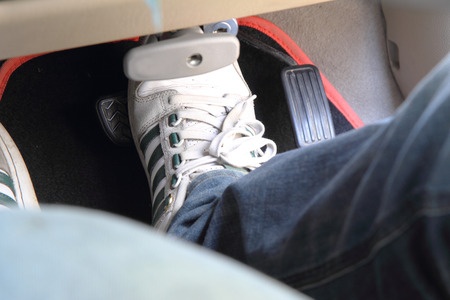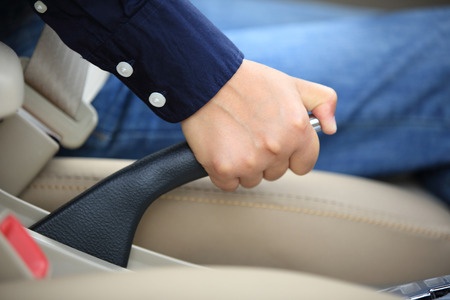Most car accidents caused by human error, but if there is caused by a car error, brake failure presents 20% of accidents, as the results of a US research.
If you’re on the go, and you notice that the braking distance does not work..
You can do the following:
1. Don’t panic!
The panic is one of the most dangerous things, what you can do at this time.
2. Take your foot off the accelerator
If you have tempomat (electronic cruise control) in the car, switch off.
The cruise control is usually turned off when you touch the brake or clutch pedal, but for safety’s sake make sure that really turned off.
3. Notice that what you feel when you step on the brake
– If it’s soft and you can be pressed completely, it can caused by low fluid level or faulty brake system, or leaking brake fluid.
– If the brake is hard and don’t move, something “stuck” in the braking system or there is some obstacles under the pedals have. Try to feel with your foot that there is something under the brake pedal.

4. Try to “bring back” the brakes
– If you have ABS brakes (ABS is only activated if you brake too hard, which is not really possible in case of faulty brakes) move continuously and firmly on the brakes.
– If you don’t have ABS brakes: most experts advise that pumping the brake pedal in order to restore the pressure. Do not keep your foot on the brake. This may take some time, try.
5. If the brake does not “answer” ..
– Switch to a lower level in the gearbox
The switching to lower rate helps the motor and the car to slow down.
- If you have a car with automatic transmission, switch to the low level (eg, 1).
- If you have a manual transmission, switch back, feel that the car slow down, and then repeat the shift. Unless you need to slow down the car as soon as possible, do not switch to too fast, because of fasts witching back to the first or second you can lose control.
– Use of the emergency brake (handbrake)
Due to the parking brake the car will stop in general, but keep in mind that the car can stop more slowly, because it brakes only the rear wheels.
Pull slowly and continuously. If you pull it too hard or too quickly, the handbrake will completely stop the wheels, which is particularly dangerous next to high speed.
Also, it can happen if you pull it suddenly that the shutter button is stuck, precisely difficult to release, so it is better to slow down pushed release button.

6. Pay attention to the road and steer
Take careful what is in front of you, and if you can maneuver the car so to avoid the plug, pedestrians or dangerous obstacles.
7. Pay attention to other cars and pedestrians
Turn on your hazard warning lights to let people know there is a problem with the car. The alarm lights notice most people and know that they should approach the car carefully.
Open the windows because the air inflow may also slow down the car and allows you to warn others with shouting.
8. If you have enough space, steer the car to the right or left edge of the road
This type of lateral movement can also slow down the speed of the car. However, at high speed don’t ever try it.
9. Use the environment to slow the car
You use this then and only then if none of the above tips did not help, or if you have to stop quickly. Keep in mind that this is very dangerous and, therefore, really only use it if there is no other choice..
What you can use? – The topography, guard rails, road roughness, smaller trees
10. Find a safe place to set-off
If none of these methods were successful, it is the safest if you steer the car to a bushy, wooded location which will slow down it, so hopefully it stops. But the grass and the sand has slowing effect….
11. After you stopped …
Turn off the ignition. Never turn off while moving, because you can lose control of the car.
Turn on the hazard warning lights (if you didn’t turn it already) put out the warning triangle. The aim is to warn other motorists.
Call an ambulance car – don’t drive the car until the brakes have not been repaired.
Tips:
- You can avoid a failure of the brakes if you regularly monitor the brake, the brake system.
- Every time you start the car, make sure that the brake works.
- The brakes are generally less effective in rainy weather.
